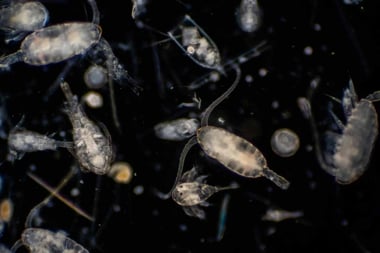An Appetite for Flowers
Many flowers are edible, and adding them to meals can make a special dish sparkle. Your garden or balcony probably contains some edible blossoms already, and its not too late to plant more.
Pick the blossoms from the stems, removing the parts that contain the pollen. Rinse them in cold water, remove the petals, and pat dry. Snip chive blossoms into your favourite vinaigrette recipe for added punch to your salads and marinades.
Flowers are among nature’s loveliest gifts. They signal the arrival of spring, add fragrance to our surroundings, and grow in a marvelous profusion of colours and shapes.
Many flowers are edible, and adding them to meals can make a special dish sparkle. Your garden or balcony probably contains some edible blossoms already, and it’s not too late to plant more.
When planning to serve flowers at the table, it’s most important to know the plant they’re from and to be very sure of its safety. Some flowers, such as foxgloves, lily of the valley, and buttercups, are poisonous. Even the flowers of some common vegetable plants - tomatoes, potatoes, and peppers, for example - can be dangerous if ingested. For this reason, children should be taught from the beginning never to put any plant material in their mouths unless they’re with a knowledgeable adult.
Flowers from a florist should be avoided as it’s highly likely they were treated with pesticides somewhere along the line (this includes flowers used to decorate wedding cakes). Similarly, plants purchased from a nursery were probably given chemical fertilizers as well as pesticides, so they should be left in the ground for at least 60 days before any of their parts are eaten.
When adding flowers to your food, start with a small amount of one type only, should anyone in the family experience an allergic reaction.
Those allergic to ragweed should avoid flowers from the daisy family, which includes sunflowers, chamomile, and cone flowers.
Fortunately, the most common and recognizable edible flowers are also easy to grow. A pot of lavender on the balcony will provide summer flavour (and fragrance) for years. Tulip petals, chopped into salads or crystallized, bring spring colour indoors. Nasturtiums flower prolifically, are easy to grow from seed, and have a pleasant peppery taste. As a bonus, they’re high in vitamin C, and their leaves and seeds are also edible. (A downside to nasturtiums: aphids find them highly attractive and will happily settle in great numbers around the stems and eventually into the flower. Check the blossoms carefully before using them.)
When picking edible flowers, select clean, recently opened blossoms and check them for insects or spiders. Be certain that no pesticides have been used on them; avoid picking flowers in public parks, from other people’s gardens, or along roadways.
Pick the blossoms from the stems, removing the parts that contain the pollen. Rinse them in cold water, then remove the petals and pat dry with a paper towel. While best eaten just after picking, prepared flowers can be kept in damp paper towels in the fridge for a few days.
Salads are an obvious way to begin with edible flowers - toss petals among fresh greens or sprinkle them on top for a colourful garnish - but flowers have other uses, too. Snip chive blossoms into your favorite vinaigrette recipe for added punch to your salads and marinades. Place a spoonful of goat cheese into a squash or zucchini blossom and sprinkle with chopped sunflower or pumpkin seeds. Or make a pesto with sage flowers instead of the usual basil, using walnuts instead of pine nuts, and flavouring with garlic and green onions.
Flowers can enhance sweet dishes, too. Unopened lavender buds, stripped from the stem and cooked in an egg custard, make a heavenly accompaniment to fresh berries (strain before serving). Rose petals provide a hint of fragrance when snipped into rhubarb or strawberry jam (first remove the bitter white tips). Violet or pansy flowers, frozen whole in ice cubes, add whimsy to cold drinks.
Adding edible flowers to your menu opens your eyes to new gardening possibilities. Your dinner guests will open their eyes in delight!
Quick-Growing Annuals for Edible Flowers
Plant seeds outdoors now to blossom later in the summer.
Nasturtium: Large seeds are easy for children to plant. Climbing varieties dress up trellises or posts with yellow, orange, and red blossoms.
Scarlet runner beans: Give this vine room to climb. Its brilliant red flowers will brighten up any corner.
Arugula: Grown for its spicy green leaves when young, its small white flowers can also be added to salads later in the summer.
Marigold: Produces yellow or orange flowers (watch for allergies). Good companion plants for cucumbers and tomatoes.
For a full season of edible flowers, consider planting perennials and herbs that bloom at different times over the year. A comprehensive list can be found perennials.com/edibleplants.html.




